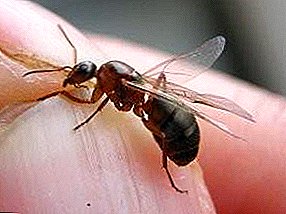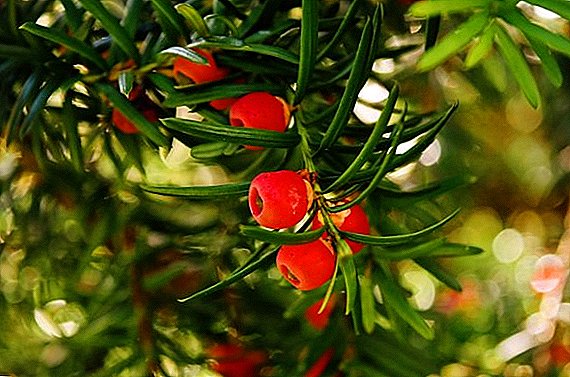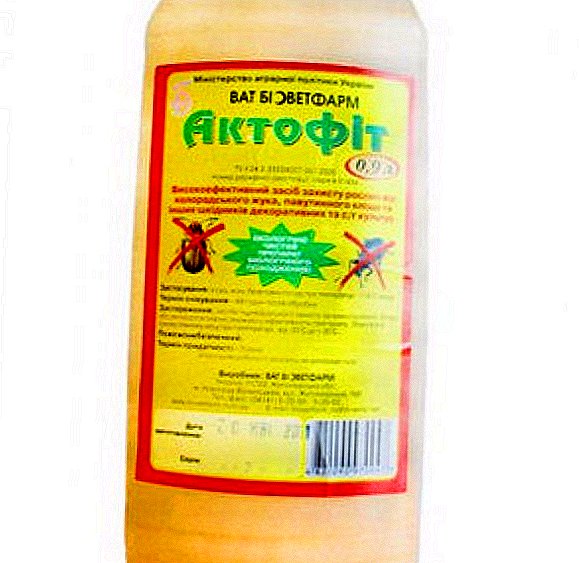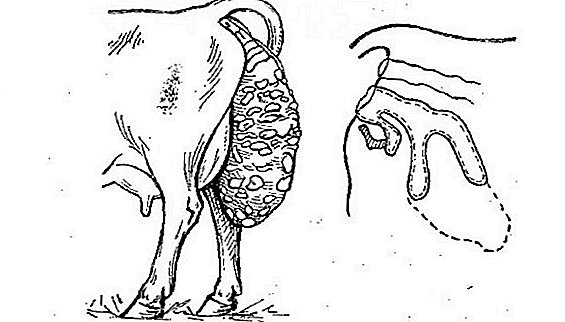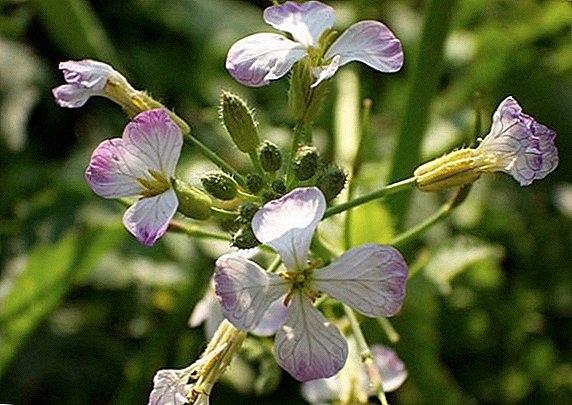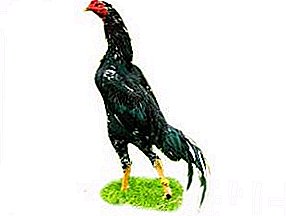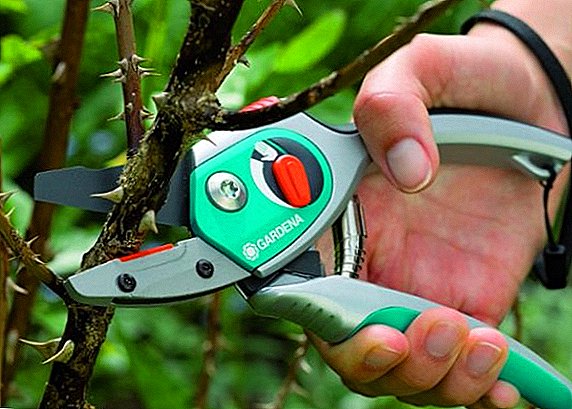 Of the large number of tools intended for the care of garden plants, the pruner is one of the most famous in the sense that even few people interested in gardening understand the name of the tool for what it is intended.
Of the large number of tools intended for the care of garden plants, the pruner is one of the most famous in the sense that even few people interested in gardening understand the name of the tool for what it is intended.
Did you know? The first secateurs that appeared at the beginning of the 19th century were similar to the current scissors and were used for cutting the vine.
Garden pruner - an appointment
Correctly pruning branches and other growths from trees, bushes, flowers and garden plants growing in a garden is impossible without a good garden shears (maybe not more than one). In this case, correctness means the exact correspondence of the operations performed to the goals for the achievement of which they are carried out. In other words, in order to understand how to choose the right pruner, you need to determine in advance exactly the consequences that are expected from its use. If you briefly describe these consequences, you get the following picture:
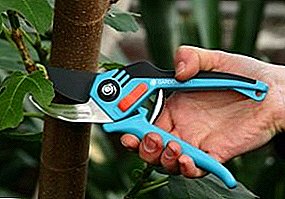 Regulation of plant growth for their most comfortable development.
Regulation of plant growth for their most comfortable development.- Increase the yield and comfort of harvesting ripened fruits due to the optimum shape and density of the crown.
- Disposal of old and sick shoots that hinder the development of the plant.
- Promoting the emergence and optimal development of young shoots.
- Formation of the most aesthetically perfect type of plant in terms of its individual characteristics and combination with other elements of the garden.
- Cutting the roots and cutting the cuttings for plant reproduction.
Types of garden pruners
The huge range of garden pruners provided today to some extent complicates the answer to the question of how to choose the only option that is needed. On the way to acquiring the best for your garden pruner should carefully consider the proposals of manufacturers. These are:
- standard (classic) pruner having two blades, one of which is cutting and one is resistant (not sharpened). The crescent shape is designed to prevent the branches from slipping during the pruning procedure. The result is a clean, even cut and a non-deformed left part of the shoot. This pruner works well with young branches, the thickness of which does not exceed 13-20 mm, without using it for massive and dried shoots that have already managed to harden enough;

- Garden shears with long handles, as a rule, are a type of two-blade shears. They, in turn, are divided into two subspecies. Scissors for trimming trees are used if the thickness of the branches exceeds two centimeters. Such pruners can be equipped with mechanical compression amplifiers. Scissors, as a pruner for bushes, used at a thickness of shoots from 1.5 to 2 cm, not trying to cut off their dry or thicker branches. Especially for coniferous and climbing ornamental plants, scissors blades are made wavy or serrated. If significant production volumes are assumed, then electric, cordless, or gasoline shears may be the best shears. There are also multifunctional scissors that can be used not only in the garden, since they cut cardboard, ropes, wire and plastic well;
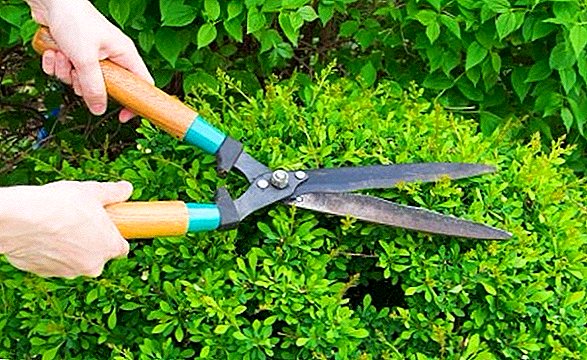
Did you know? The French word "pruner" is just translated as garden shears.
- gardeners interested in pruning vines, thick branches, dry and hard shoots on trees and bushes are offered single-pruned pruners with a small iron or plastic anvil with a corrugated surface. Corrugation does not allow the branches to crawl when pruning;

- A garden pruner on a very long handle can simply be called a delimber, although this is not the only option for pruning very long branches, say, on tall trees. A professional lopper is controlled by two hands, with a working arm length of up to 0.9 m, this can not be otherwise. The purity of the cut is guaranteed, and additional convenience is that when forming bushes there is no need to work in the slope. In addition to hand loppers, there are a choice of working on electricity (mains and battery) and gasoline;

- Special secateurs for shrub vegetation processing have been developed and sold massively. Which of these secateurs is better to choose, you need to decide on the basis of real needs. As a rule, they have lengthened handles and reinforced blades. True, there are tools with both bilateral and single-sided blade. With the help of the latter, it is possible to remove unnecessary already branches with a thickness of up to 5 cm;
Important! The length of the effort depends on the length of the handles, so that with greater labor costs it is better to have a longer handle.
- ratchet pruner is reliable to ensure the gradual cutting of any type of branches. With a few successive clicks, an ever greater recess of the cutting blade is achieved with the minimum necessary physical effort;
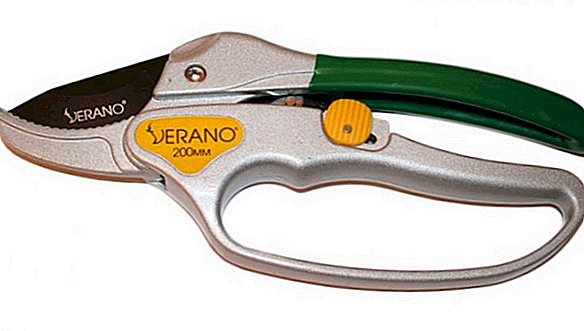
- High-cutter, as the cutting pruner from the delimbing category is simplified, is specifically designed for trimming tall shrubs and trees. The effect is provided by a rod (or telescopic device). At the same time, the required length of the handle is adjusted by folding parts or is achieved with the help of an additional rod. Such pruners are also manufactured taking into account the possibility of using gasoline or electricity;

- especially clean cuts on the stock or graft, made by a special figured knife that fits on the graft pruning shear, are also connected with particular precision. Given the love of gardeners to achieve plant diversity on their plots, we can safely recommend this very good pruner, significantly reducing the time of work, for regular use.

What to look for when choosing a pruner for the garden: highlights
How, studying the variety of tools offered by the trade, precisely choose the garden shears you need? To do this, without haste, pay close attention to a number of significant circumstances.
- To determine the type (s) of work for which the secateurs will be used.
- Make sure that the spring for the pruner matches your power capabilities in order to use it comfortably. To do this, before buying it is necessary to ponder on the handles, at the same time checking whether they fit the size of your palms and fingers and whether the tool itself is too heavy for you (or your family members).
- It is advisable to find a secateur that can be used with both the right and left hand.
- Check pruning blades for special treatment in order to prevent sticking of vegetable juice during pruning.
- To provide, keeping in mind the safe use and storage of the secateurs, that it has a lock for coupling the blades.
- Blades secateurs not last forever. Make sure that the model you choose has the option of replacing them - otherwise, over time (short, if there is a lot of work), you will either have to look for hard options for sharpening the blades, or throw away the whole tool altogether.
- Safety when working pruners assumes that he had a strong grip with the hands of the gardener and did not slip, creating discomfort and trauma. Buy a secateur with either rubberized handles or with ones that are coated with silicone.
- Do not limit yourself to the instructions for the product and do not rely on the high price - it is not a reliable guarantee of the same high quality. Do not neglect the opinions of professionals and knowledgeable people - they will help you to optimally compare the price offered with the technical level of the item being purchased and with your financial capabilities.
How to maintain the suitability of a secateur: proper care
Not everyone can afford to purchase a universal pruner with a full set of excellent qualities with the possibility of their use in the production of any work. Yes and no, this tool is necessary in most cases. Not to mention the fact that having a pruner for branches on the farm does not mean that a pruner is also needed for flowers. Therefore, using a standard or highly specialized pruner, you need to take care of its reliability and durability for as long as possible. There are not very many rules, and they are:
- pruning blades made of a material subject to corrosive effects should be wiped dry after application;
- removal of vegetable juice from the surface of the blades is made with white spirit, kerosene or other solvents of organic origin;
- upon completion of cleaning the surface of the blades, the knot of rotation and the pruning springs, they are covered with a thin layer of engine oil (a few drops are enough for this) or are lubricated with a special compound for garden tools (litol, graphite grease);
- collapsible pruners need to be cleaned in a disassembled state;
- non-replaceable blades can be re-sharpened (if really blunt), using an abrasive triangular bar or a flat diamond file. The following procedure is applied: from the side of the cutting edge, sharpening starts to make reciprocating movements, after which, pressing the bar against the back side of the blade, they remove the resulting burrs.
Important! Replaceable blades that have become unusable should be replaced without new ones without thinking.
- in winter, when the tool is not in use, it should be stored, firstly, in a room where there are no sharp temperature differences leading to the formation of condensate with the subsequent appearance of rust; secondly, in the open form, so that the spring is not accustomed to be in a compressed state and would then be able to completely unclench (it is generally better to remove the removable spring for a while).
Garden tools: how to replace a pruner
Modern industrial production of any types and types of secateurs is so developed that the question of replacing them with other devices, as a rule, does not arise at all. Another thing is if the volume of trimming work is too small to spend on its acquisition in the absence of a secateur. In this case, you can use other cutting tools. For example, the graft pruner will be successfully replaced by a special graft knife.  Different types of knives, depending on the sharpness, severity and strength of the material, can be used for cutting branches and plant shoots. In some cases, it is possible to use sufficiently strong and sharp scissors for the same purpose (both ordinary household and special scissors, for example, for cutting metal). Roots and cuttings can be cut off with an ax or a sharply sharpened bayonet spade. To remove some vegetative growths, ordinary wire cutters will fit perfectly. You can use a thin saw, but you need to consider that the resulting cut will not be as clean as we would like.
Different types of knives, depending on the sharpness, severity and strength of the material, can be used for cutting branches and plant shoots. In some cases, it is possible to use sufficiently strong and sharp scissors for the same purpose (both ordinary household and special scissors, for example, for cutting metal). Roots and cuttings can be cut off with an ax or a sharply sharpened bayonet spade. To remove some vegetative growths, ordinary wire cutters will fit perfectly. You can use a thin saw, but you need to consider that the resulting cut will not be as clean as we would like.
Garden work over time is increasingly mechanized. Increasingly, special devices appear that allow garden and garden crops to be processed more quickly and with higher quality, which leads to their early ripening and higher yields. Secateurs constituted an impressive segment in a wide range of garden tools, and this segment should not be neglected.


 Regulation of plant growth for their most comfortable development.
Regulation of plant growth for their most comfortable development.







